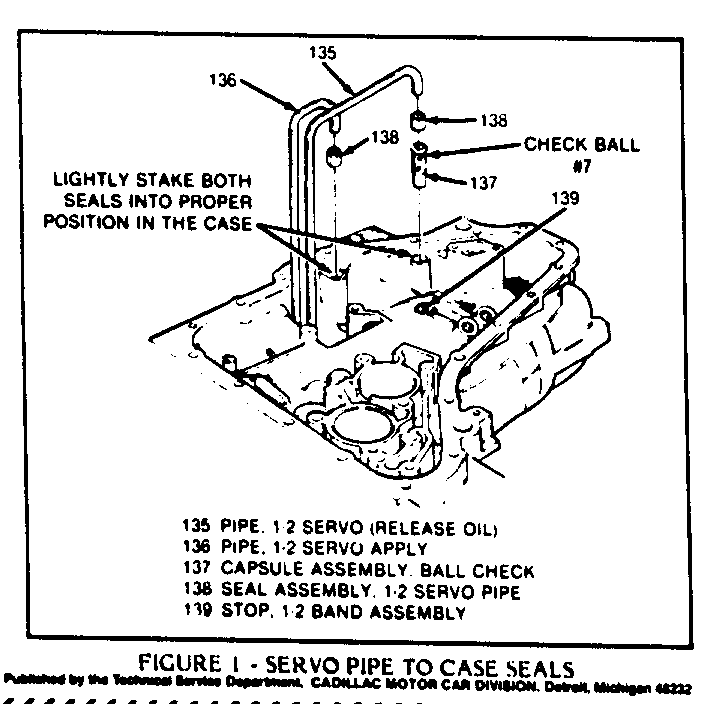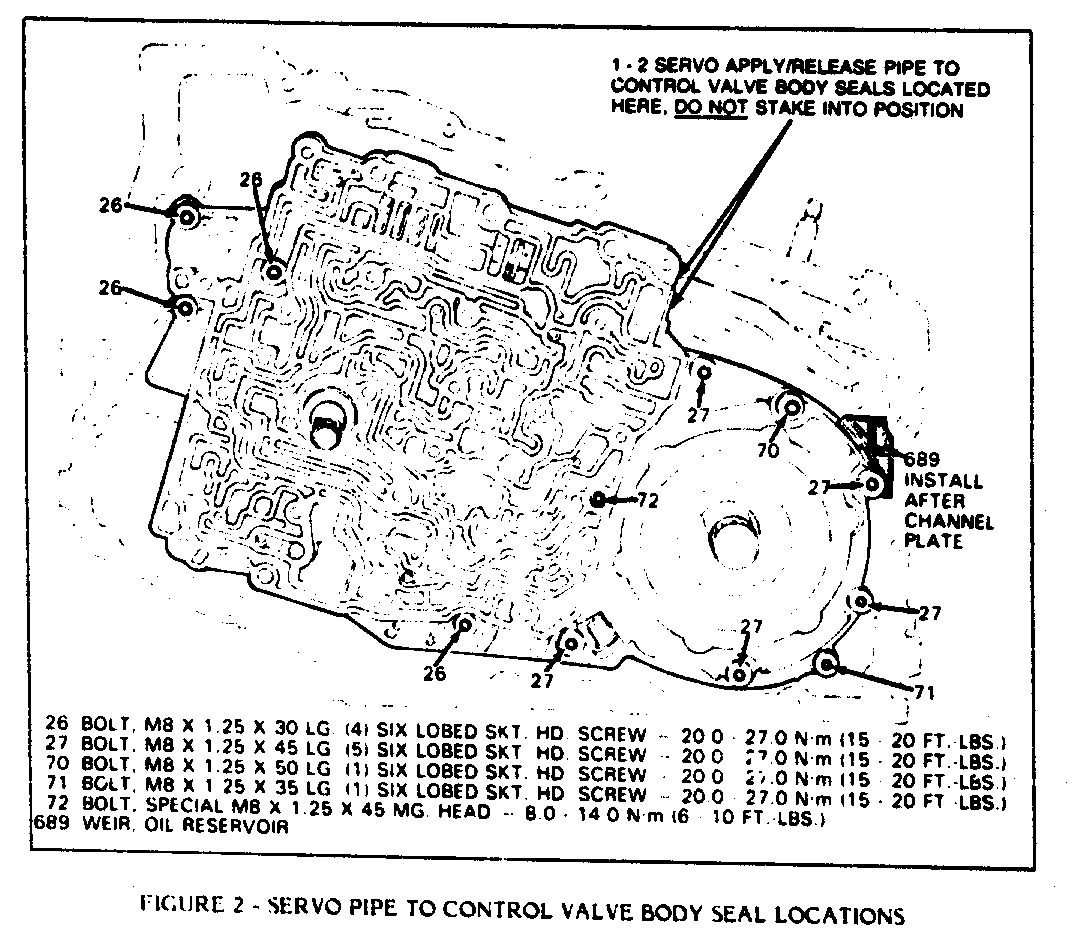DELAYED FORWARD ENGAGEMENT SLIPS ON TAKEOFF/2-3 UPSHIFT

MODELS AFFECTED: 1985 - 1986 DE VILLE/FLEETWOOD
Some 1985 and 1986 Cadillac equipped with a THM440-T4 transaxle may experience conditions of delayed forward engagement and slipping on take off from stops, or a 2-3 upshift bump. These conditions can be caused by a leak at the seals in the hydraulic circuits controlling apply and release of the 1-2 band.
Seals are included at both ends of the apply and release pipes (refer to Figures 1 and 2) and on the servo piston. Damaged seals in any position will effect operation of the servo. Leaking apply circuit seals will cause delayed engagement (forward only) and slipping when in first or second gears. Seal leaks in the release circuit will cause 2-3 upshift bujmp, or tie up, due to inadequate band release (severe release circuit leak could result in 2-3 upshift slip).
When performing transaxle service closely inspect the transaxle oil condition. Presence of burnt oil or metal debris indicates internal transaxle wear; Serice via replacement with a SRTA transaxle or overhaul per procedures listed in the appropriate Service Information Manual. If the transaxle oil is not burnt and debris is not present inspect the servo pipe seals at both ends of each pipe and the 1-2 servo psiton seals for damage. Replace any damaged seal as outlined in the appropriate Service Information Manual. When installing the servo pipes into the control valve body, ensure seal damage does not occur. Road test to ensure proper transaxle operation.
For warranty purposes use labor operation T6133 for 2.8 hours when replacing servo pipe to control valve body seals. Use Labor Operation T6134 for 1.0 hour to replace servo pipe to case seals. Use Labor Operation K6626 for 0.3 hour to replace servo piston seals.


General Motors bulletins are intended for use by professional technicians, not a "do-it-yourselfer". They are written to inform those technicians of conditions that may occur on some vehicles, or to provide information that could assist in the proper service of a vehicle. Properly trained technicians have the equipment, tools, safety instructions and know-how to do a job properly and safely. If a condition is described, do not assume that the bulletin applies to your vehicle, or that your vehicle will have that condition. See a General Motors dealer servicing your brand of General Motors vehicle for information on whether your vehicle may benefit from the information.
